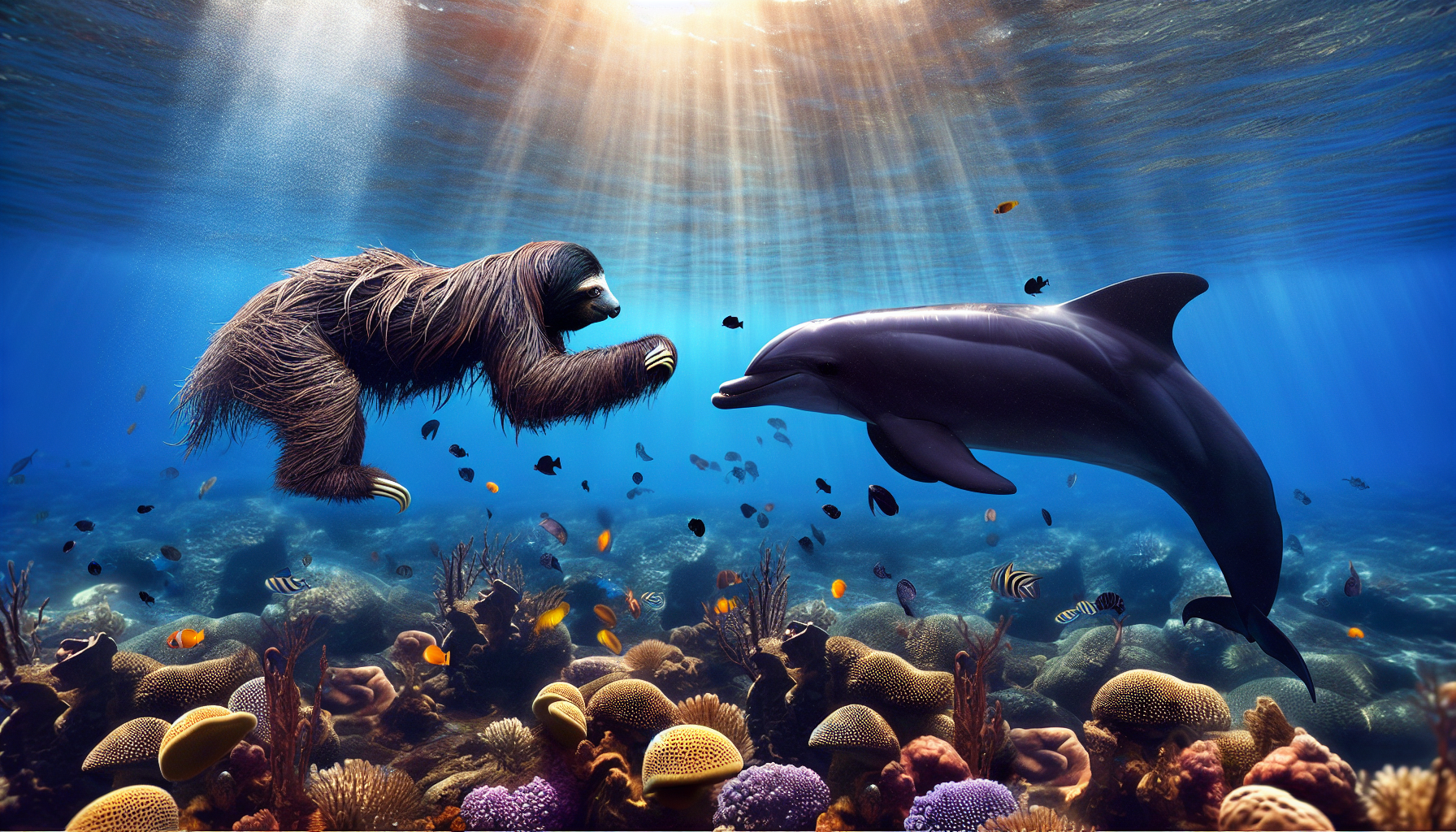
Here’s a wild science fact that’ll make you rethink sloths: these slow-moving tree-dwellers can hold their breath longer than dolphins! Sloths, known for their leisurely lifestyle in the rainforests of Central and South America, have a surprising superpower. They can hold their breath for up to 40 minutes, while dolphins—expert swimmers—typically need to surface for air every 10 minutes or so. How does a creature that moves at a snail’s pace outdo a marine mammal in this underwater challenge?
The secret lies in the sloth’s unique biology. Sloths have an incredibly slow metabolism, about 40–45% slower than other mammals their size, which means they use oxygen at a much lower rate. When they submerge in water—often to cross rivers or escape predators—they can slow their heart rate to just a third of its normal pace, a trick called bradycardia. This lets them conserve oxygen for an impressively long time. Their muscles are also packed with slow-twitch fibers, which are super efficient at using oxygen, making sloths surprisingly good at holding their breath.
Dolphins, on the other hand, are built for speed and agility in the ocean. They need to breathe more frequently because their active lifestyle burns through oxygen faster. A dolphin’s typical dive lasts 8–10 minutes, though they can push it to 15 in a pinch. But 40 minutes? That’s sloth territory! Researchers discovered this sloth superpower while studying three-toed sloths in Costa Rica, noting how they’d casually swim across rivers without coming up for air, leaving scientists baffled.
Next time you’re at the zoo, don’t underestimate that sleepy sloth hanging in the tree—it’s got a hidden talent that even dolphins can’t match. Nature is full of these quirky surprises, and we’re here to share them with you. Pass this fun fact along and come back for more oddities that’ll make you smile!

Leave a Reply